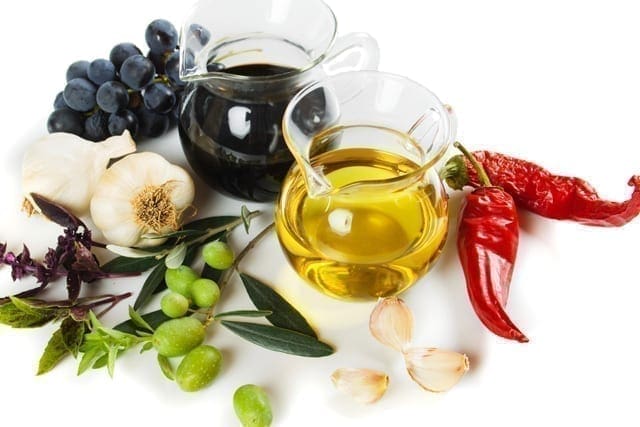Summer is a great time to enjoy a wonderful salad of carotenoid-rich vegetables to beautify and improve the health of our skin and bodies. But when we walk past the salad dressing aisle, we are inundated with the choices of salad dressings: low-fat, fat-free, sugar-free, gluten-free, dairy-free and vegan, along with the artisan and celebrity brands. Many of these dressings contain an array of bottled chemicals, added syrups and sugars, preservatives and highly-processed oils. The good news is that it’s so easy—not to mention healthier—to make your own!MORE: How to Build a Beautiful Superfood SaladThe Favorable Side of Salad Dressing FatsRecent studies show that when we eat salads with fat-containing salad dressing, we absorb greater amounts of carotenoids. Both an older study in the American Journal of American Nutrition, a study last month in the Journal of Molecular Nutrition and Food Research found that the salad dressings made with fat increased the absorption of certain carotenoids better than fat-free dressings.Now this does not mean to overdo it with the fats—you still want to moderate your intake of fat calories. The studies showed that different fats had different absorption rates, but that salad dressings made with heart-healthy monounsaturated fats, such as extra virgin olive oil, had a similar rise in carotenoid levels at all three tested doses. This means you can use less fat and still get the benefits.Salad’s Beauty BoostCarotenoids are potent, free radical-fighting antioxidants that may help reverse skin damage and slow the degenerative aspects of aging. So eating plenty of dark, leafy greens and vegetables in a salad pre-tossed with vinaigrette made with a heart-healthy monounsaturated fat may help our bodies absorb more carotenoids.MORE: Fatty Foods That Promote Weight LossMost salad dressings use a ratio of 3:1 parts oil and vinegar or acid. Healthier vinaigrettes use 2:1 ratios. I advise to not use greater than a 1:1 oil-to-acid ratio, which still provides the fat-soluble benefits shown in the aforementioned studies. And if you have heart or cholesterol issues, a fat-free dressing is advised.It’s All About the IngredientsSo, how do you make a 1:1 ratio vinaigrette taste good? It’s simple—use great-tasting ingredients. Think of it this way: the more pleasing the acid or vinegar, the less added oil and sugars you will want to add. If you can drink a Riesling wine with a smile on your face, then you certainly can make a Riesling vinaigrette salad dressing using less oil. There are so many choices of wonderful vinegars—from champagne to grain vinegars or fruit vinegars, to fine-aged balsamic vinegars—that can be best friends with your salad ingredients.Always pre-toss your salad before serving. This way, all of the salad ingredients are thoroughly coated, you’ll need less salad dressing to do it and your salad will taste better.This great-tasting vinaigrette recipe will get you started on a path to making your own salad dressings without added sugars and saturated fats.MORE: What You Need to Know About Saturated FatsAged Four Leaf Balsamic and Fig Vinaigrette RecipeMakes 8 servingsServing Size: 1 tablespoonIngredients
- 2 tablespoons balsamic vinegar (four-leaf quality, which tends to be sweeter and more syrup-like than traditional balsamic)
- 1 tablespoon fig vinegar
- 2 teaspoons white grape juice
- 1 teaspoon whole-grain mustard
- 2 teaspoons parsley, chopped
- 1 teaspoon garlic, minced
- 3 tablespoons extra-virgin olive oil
Place all of the ingredients in a small bowl and slowly add the oil while whisking vigorously.




































